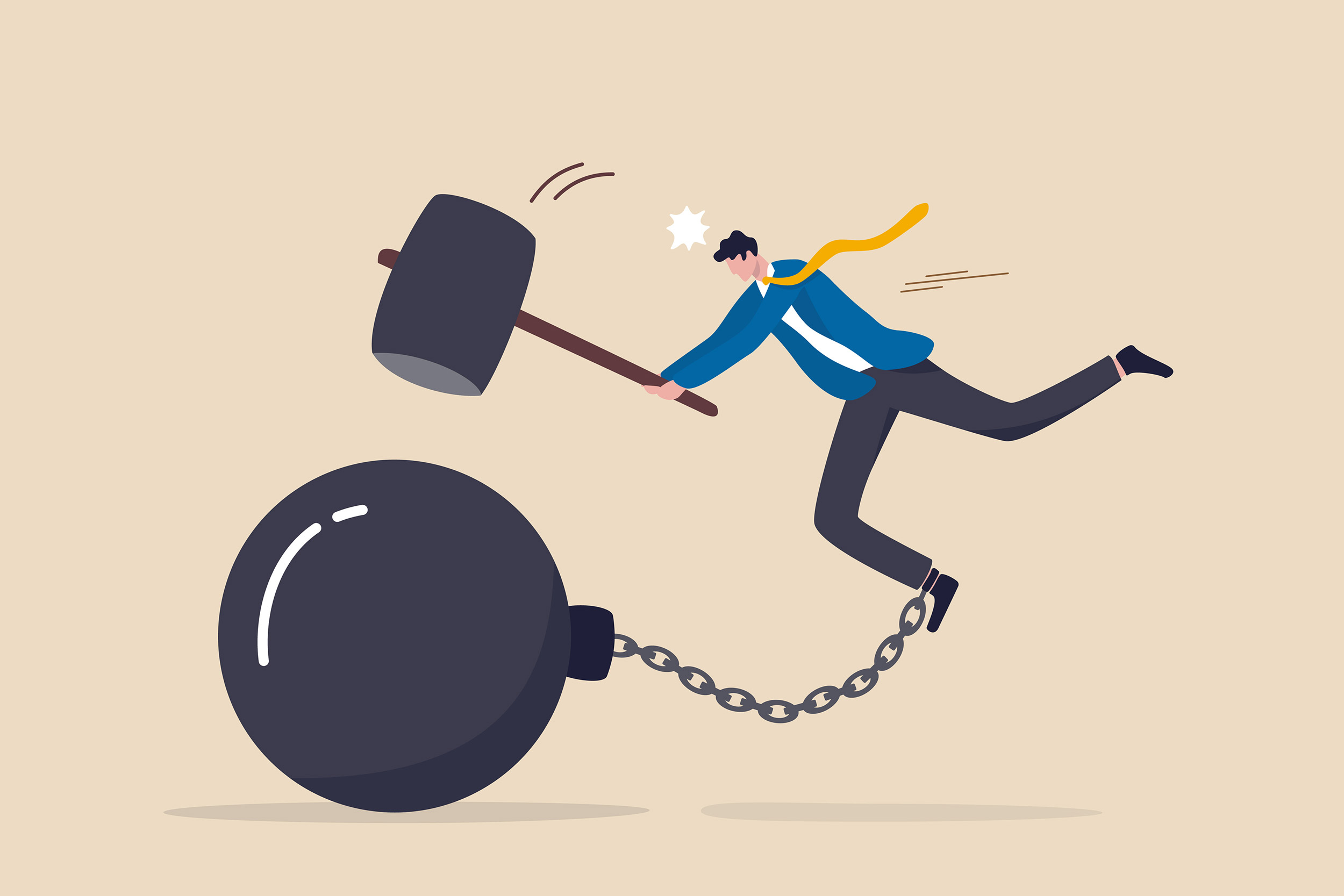
Breaking a bad habit can be done, say experts.
Nuthawut Somsuk/iStock
How to break a bad habit
Make it easier by taking a hard look at motive, modification, and mindset
We all have habits we’d like to get rid of, and every night we give ourselves the same pep talk: I’ll go to bed earlier. I will resist that cookie. I will stop biting my nails. And then tomorrow comes, we cave, and feel worse than bad. We feel defeated and guilty because we know better and still can’t resist.
The cycle is understandable, because the brain doesn’t make changes easily. But breaking an unhealthy habit can be done. It takes intent, a little white-knuckling, and some effective behavior modification techniques. But even before that, it helps to understand what’s happening in our brains, with our motivations, and with our self-talk.
We feel rewarded for certain habits
Good or bad habits are routines, and routines, like showering or driving to work, are automatic and make our lives easier. “The brain doesn’t have to think too much,” says Stephanie Collier, director of education in the division of geriatric psychology at McLean Hospital, and instructor of psychiatry at Harvard Medical School.
Bad habits are slightly different, but when we try to break a bad one we create dissonance, and the brain doesn’t like that, says Luana Marques, associate professor of psychology at Harvard Medical School. The limbic system in the brain activates the fight-flight-or-freeze responses, and our reaction is to avoid this “threat” and go back to the old behavior, even though we know it’s not good for us.
Often, habits that don’t benefit us still feel good, since the brain releases dopamine. It does this with anything that helps us as a species to survive, like eating or sex. Avoiding change qualifies as survival, and we get rewarded (albeit temporarily), so we keep reverting every time. “That’s why it’s so hard,” Collier says.
Finding the reason why you want to change
But before you try to change a habit, it’s fundamental to identify why you want to change. When the reason is more personal — you want to be around for your kids; you want to travel more — you have a stronger motivation and a reminder to refer back to during struggles.
After that, you want to figure out your internal and external triggers, and that takes some detective work. When the bad-habit urge hits, ask when, where, and with whom it happens, and how you are feeling, be it sad, lonely, depressed, nervous. It’s a mixing and matching process and different for every person, but if you notice a clue beforehand, you might be able to catch yourself, Collier says.
The next part — and sometimes the harder part — is modifying your behavior. If your weakness is a morning muffin on the way to work, the solution might be to change your route. But environments can’t always be altered, so you want to find a replacement, such as having almonds instead of candy or frozen yogurt in lieu of ice cream. “You don’t have to aim for perfect, but just a little bit healthier,” Collier says.
This is an excerpt from an article that appears on the Harvard Health Publishing website.





